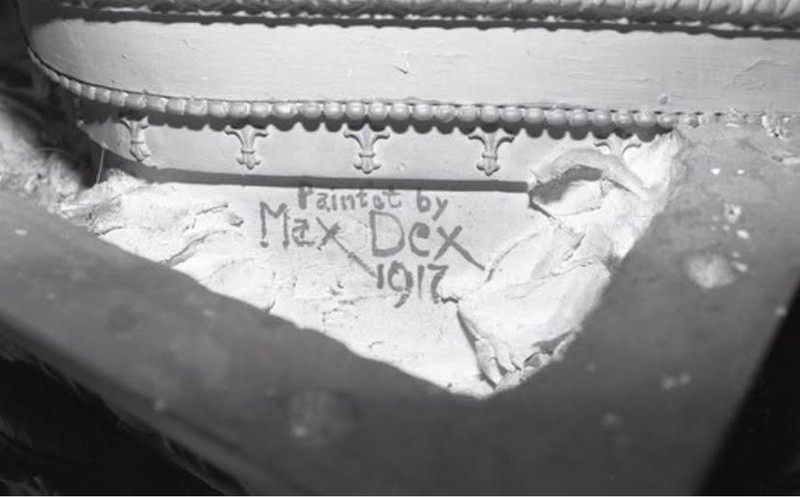Max Dex - 536 20th Street NW, Foggy Bottom - 1914 / William Bender- 507 22nd Street NW- 1917
Introduction
Text-to-speech Audio
Images
A photo of Max Dex's signature in the Formal Parlor in the Heurich House

Backstory and Context
Text-to-speech Audio
By the mid-19th century and into the 20th, Foggy Bottom was one of the most industrial and ethnically diverse neighborhoods within the city. Immigrants, notably Irish and German, saw Foggy Bottom as a place to be close to their work while also living within a community of people with similar backgrounds.
Max and Mary Dex moved into the Foggy Bottom neighborhood in 1914. William Bender, a chauffeur for the Heurich family, lived nearby with his family at 507 22nd Street NW in 1917.
How might Max and Mary have experienced the neighborhood differently from the DC-born William Bender? What was it like for William, and his wife Bessie, to leave their family and children for work every day? How else might we explore the experiences of household workers, both women and men, in Foggy Bottom?
Sources
Anderson, G. David and Blanche Wysor Anderson. "Foggy Bottom: Industrial Waterfront to Place of Power." In Washington at Home: An Illustrated History of Neighborhoods in the Nation’s Capital, edited by Kathryn Schneider Smith, 72-87. 2nd ed. Baltimore: Johns Hopkins University Press, 1988.
Fitzpatrick, Sandra and Maria E. Goodwin. The Guide to Black Washington: Places and Events of Historical and Cultural Significance in the Nation's Capital. New York: Hippocrene Books, 2001.
Lintelman, Joy K. “Making Service Serve Themselves: Immigrant Women and Domestic Service in North America, 1850-1920.” In People in Transit: German Migrations in Comparative Perspective, 1820-1930, 249–66, 1995.
Heurich House instagram page: @heurichhouse
